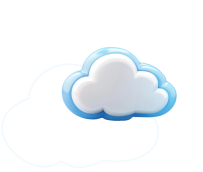 blog.by Nadine Mohamed
blog.by Nadine Mohamed
In the digital age, the terms “data” and “information” are often used interchangeably, yet they represent fundamentally different concepts. While both are essential to computing, decision-making, and communication, understanding the distinction between data and information is crucial for professionals in fields such as computer science, data analytics, artificial intelligence, business intelligence, and information systems. Misinterpreting these concepts can lead to inefficiencies, poor decision-making, or flawed data analysis. This article provides a detailed explanation of what data and information are, how they differ, and how they interact with each other in practical applications. It also covers characteristics, types, real-world examples, importance in business and technology, and the challenges involved in handling them effectively.
What Is Data?
Data refers to raw, unprocessed facts and figures gathered from observations, measurements, or activities. It is often collected in large volumes and in various forms—numbers, words, images, sounds—without any immediate context or interpretation. Because of its raw nature, data in isolation carries little or no meaning to its user. Instead, it must undergo processing or analysis before it can become useful. In computing terms, data serves as the input for information processing systems.
Examples of Data
Examples of data include: a list of temperatures recorded hourly over a week; a spreadsheet of numbers representing monthly sales; entries from a survey; images captured by a security camera; binary code stored on a hard drive; or simple entries like "apple," "green," or "12.5." These elements mean little without context.
Characteristics of Data
Raw and Unorganized: Data is the initial input gathered before any transformation or interpretation takes place. It has not yet been structured or explained in a meaningful way.
Context-Free: Data alone has no meaning. A single number like “42” is meaningless unless it is explained as the temperature in degrees Celsius, the age of a person, or the number of items sold.
Discrete Units: Data elements are individual units that can be numerical, textual, visual, or auditory. These are collected in datasets for further analysis.
Variety of Formats: Data can be captured in many different formats, such as text, numbers, images, audio clips, video recordings, log files, sensor outputs, and more.
Abundant: With modern technology, data is generated in massive quantities every second. This includes data from social media, online transactions, GPS systems, IoT devices, and countless digital processes.
What Is Information?
Information is data that has been processed, organized, structured, or presented in a way that makes it meaningful and useful for decision-making. Unlike data, which is static and meaningless by itself, information is dynamic and contextual. It enables interpretation and understanding and forms the basis for insights, communication, and action. When raw data is cleaned, sorted, analyzed, and visualized, it becomes information that can help guide decisions or explain trends.
Examples of Information
Examples of information include: “The average sales for the last quarter increased by 8% compared to the previous one”; “The customer satisfaction index dropped due to late deliveries in April”; “The stock price rose after the announcement of a new product.” In each case, the data has been contextualized and interpreted to provide meaning.
Characteristics of Information
Processed and Organized: Information results from the manipulation of raw data using tools such as software, statistical analysis, or manual interpretation.
Contextualized: Information is always tied to a particular context. Knowing that a person scored “95” is only useful if you know the subject, the scale, and how others scored.
Purposeful: Information is generated with a purpose—to support decision-making, improve understanding, or communicate findings.
Timely and Relevant: Good information must be up-to-date and directly related to the needs of the user. Outdated or irrelevant data, even if processed, loses informational value.
Relationship Between Data and Information
The relationship between data and information is sequential and hierarchical. Data comes first. It is gathered from various sources and then goes through a process that includes classification, validation, analysis, and formatting. Once data is structured and analyzed, it turns into information. Information, in turn, may be further processed to extract knowledge or insights. This transformation is often visualized through the DIKW hierarchy—Data, Information, Knowledge, and Wisdom.
Types of Data and Information
Data and information can be categorized into multiple types depending on their structure, source, and application.
Types of Data
Structured Data: This is data that adheres to a predefined model or schema and is usually stored in relational databases, spreadsheets, or tables. Examples include transaction records, inventory databases, and student grades.
Unstructured Data: This type of data lacks a formal structure, making it more difficult to store and analyze. It includes documents, emails, images, videos, social media posts, and audio files.
Semi-structured Data: A hybrid form that contains both structured and unstructured elements. Common examples include XML files, JSON documents, and HTML pages.
Types of Information
Descriptive Information: It explains what happened. For example, "Revenue reached $2 million in May."
Diagnostic Information: It explores the reasons why something happened. For example, "Customer churn increased due to poor service response times."
Predictive Information: It uses historical data to forecast future outcomes. For example, "Sales are projected to rise by 15% in the next quarter."
Prescriptive Information: It suggests actions to be taken based on insights derived from data. For example, "Focus marketing efforts on the 25–34 age group to increase conversions."
Importance in Business and Technology
The effective use of data and information can determine the success of business operations, technological innovation, and policy development.
Data Collection
Businesses collect data through multiple channels including customer interactions, web analytics, surveys, transactions, and IoT devices. The quantity and quality of data collected directly influence the quality of insights that can be generated later.
Data Processing
Data processing involves cleaning, filtering, aggregating, and analyzing the collected data. It transforms raw data into information that is meaningful and ready for interpretation. Techniques such as data mining, machine learning, and statistical analysis play a critical role here.
Information Systems
Information Systems like Management Information Systems (MIS), Business Intelligence (BI) platforms, and Enterprise Resource Planning (ERP) systems help businesses transform data into information and support strategic planning. These systems often include dashboards, reports, and visualization tools for decision-makers.
Real-World Applications
Both data and information are integral in real-world applications across every industry.
Healthcare
In healthcare, patient data is gathered from electronic medical records (EMRs), sensors, and lab tests. This data becomes information when used to monitor patient outcomes, identify risk factors, or support diagnostic decisions.
Finance
Financial institutions collect transaction data, credit scores, and market data. When this data is processed, it provides information such as risk assessments, investment recommendations, and fraud alerts.
Education
Schools and universities gather data from student assessments, attendance, and engagement metrics. This is transformed into information that educators use to measure learning outcomes and optimize teaching strategies.
Marketing
Marketing teams use user interaction data, social media metrics, and customer feedback to create targeted campaigns, segment audiences, and track performance, thereby turning raw data into strategic information.
Challenges in Managing Data and Information
As important as data and information are, they come with significant challenges that organizations must manage effectively.
Data Quality
Poor-quality data—containing errors, duplicates, or incomplete entries—can lead to misinformation and bad decisions. Ensuring data accuracy and integrity is a key priority.
Data Overload
The sheer volume of data being produced can overwhelm systems and personnel. Without proper tools and methodologies, organizations struggle to find meaningful patterns or derive insights.
Security and Privacy
Data breaches and unauthorized access can compromise sensitive information. Compliance with regulations like GDPR, HIPAA, and others is critical to maintain trust and protect user rights.
Timeliness
Outdated data can lead to decisions based on stale or irrelevant information. Real-time processing and updating systems are essential in fast-moving industries such as e-commerce or finance.
Evolving Trends
With the advent of big data, artificial intelligence, and the Internet of Things (IoT), the distinction between data and information is becoming more nuanced and significant.
Big Data Analytics
Big data involves analyzing massive datasets that exceed the capabilities of traditional databases. Advanced analytics transform this vast data into actionable information for strategic decision-making.
AI and Machine Learning
AI systems rely on data to learn and make predictions. These systems turn vast amounts of data into intelligent information—such as speech recognition, recommendation engines, and predictive maintenance.
Data Democratization
As access to data tools increases, more employees at different levels of an organization can transform data into information, leading to faster, more decentralized decision-making.
Conclusion
Data and information are foundational to modern knowledge systems, technology infrastructures, and organizational decision-making. While data consists of unprocessed facts and raw figures, information represents processed, contextualized, and meaningful outputs derived from that data. The transformation from data to information involves organization, analysis, and interpretation. Understanding the distinction between the two is essential for managing digital resources effectively, making informed decisions, and gaining competitive advantage in an increasingly data-driven world. As data volumes continue to grow, the ability to convert raw data into timely, relevant, and actionable information will remain a critical skill for individuals and organizations alike.
Are you ready to get started and study abroad? Just browse through more than 110,000 diverse programs worldwide, Educatly offers a diverse array of educational opportunities tailored to your interests and career goals.
Signing up is easy! Simply create a profile and explore our extensive database to find the perfect program for you. Whether you're drawn to renowned universities in bustling cities or serene campuses in scenic locations, Educatly ensures you'll find a match that suits your aspirations.
To receive personalized guidance every step of the way, schedule a free consultation with one of our experienced educational advisors. They're dedicated to helping you navigate the application process, understand visa requirements, and secure scholarships or financial aid, ensuring you access top-tier educational opportunities with confidence.




 blog.feedback.yes
blog.feedback.yes blog.feedback.no
blog.feedback.no